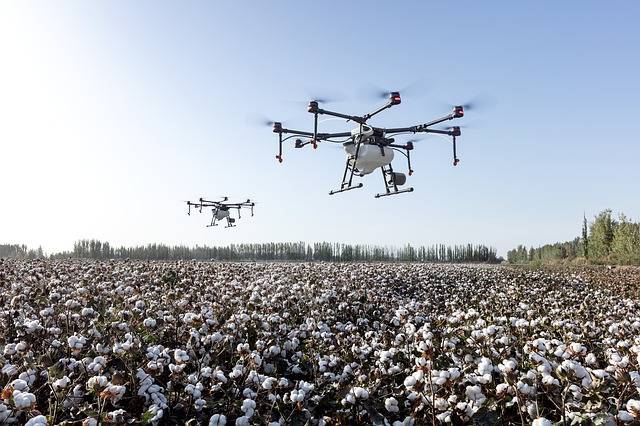Some years back, drones were viewed as a futuristic vision that needed some growing to do. Nowadays, this is no longer the case because drones are common in almost every sector you can think of.
While many industries have adopted the use of drone technology in their operations, none comes close to the construction industry. With every passing day, there is even more use of drones in construction job sites making the industry the leading beneficiary of the technology.
According to Fortune Business Insights™, The global small drone market size was USD 7,720.3 million in 2019 and is projected to reach USD 35,009.4 million by 2027, exhibiting a CAGR of 24.11% during the forecast period.
So how can drones be used to increase the scalability of construction projects? Read on to find out.
Improving Safety
Safety is very important for any ongoing project. Construction projects are renowned for being very dangerous, and sometimes, when the proper measures are not implemented, injuries and deaths could occur.
Before drone technology made its way into construction projects, the rates at which people got injured or lost their lives in job sites were alarming. Nowadays, drone technology has taken over some otherwise dangerous tasks that had to be done by construction workers.
Tasks like inspecting job sites containing dangerous materials and gases, identifying any electrical faults, and inspecting tall buildings can now be done using a drone with the workers’ feet safely on the safe ground.
By using drone mapping services, the risks of any accidents occurring are minimized, and projects take lesser time to complete.
Promoting Efficiency in Land Surveying
Nowadays, drone technology has almost entirely replaced some of the surveying methods used in construction and architectural projects. This is because drones are easily equipped with high-quality cameras, infrared sensors, geo-location sensors, and other gadgets that help with capturing accurate data on job sites.
Using drones, you’re able to gather any information you require about the physical and environmental condition of the job site before any project can commence.
It’s important to note that drones are able to provide high-resolution videos and images, which are later converted into 3D models and 2D orthophotos. With details like this, the drones have been able to eliminate any human errors that might occur when taking critical measurements of construction projects. You can explore Effective Apps to Improve the Drone Photography to enhance aerial imagery for better project planning.
This also helps in saving the time needed to complete tasks. In most projects, drones can also be used to provide the project owners and managers with progress monitoring whenever they need to.
Also, using drone technology, projects managers can get real-time updates about the construction projects which help them make any adjustments or deployments where necessary. This means that when drone technology is used well, projects can complete faster and more economically for the benefit of everyone involved.
This helps improve the overall efficiency of construction projects, something that contributes to overall customer satisfaction.
Mitigating Risks
If you think about it, most project managers are basically risk managers. While focusing on some project aspects, such as productivity, it’s very easy for them to lose sight of what is important.
You’ll find that from the moment a project begins to the time it concludes, project managers carry significant risks throughout. Most projects come with limited resources, meaning that project managers have to be very cautious about how they spend these resources.
This is because any mistakes that could lead to rework, missed deadlines or legal woes for the customers can be very costly. For this reason, all project managers and contractors have to stay ahead of these mistakes to ensure that the projects are completed in the most efficient way possible.
With the help of drones, projects managers can mitigate these risks because they identify any issues related to the project way before they turn into bigger problems. In agriculture and other industries, similar drone advancements are transforming operations—learn more about How Can Agriculture Drone Technology Resolve Top Issues in Farming?.
Using drones also provides those in charge of the projects with accurate data to help with any impending disputes or legal proceedings. This is because drones bring much-needed transparency that project owners need to ensure that the resources they assign for these projects are well spent. If you’re experiencing issues with drones in various industries, check out this guide on Why Is My Drone Not Flying Straight? Troubleshooting Tips to ensure smooth operations.
Conclusion
With drone technology, the construction and architectural industry have adapted to more efficient ways of completing projects and ensuring transparency.
This helps give project owners and managers a better idea about the progress of their projects and ensuring that everything comes together as planned.




